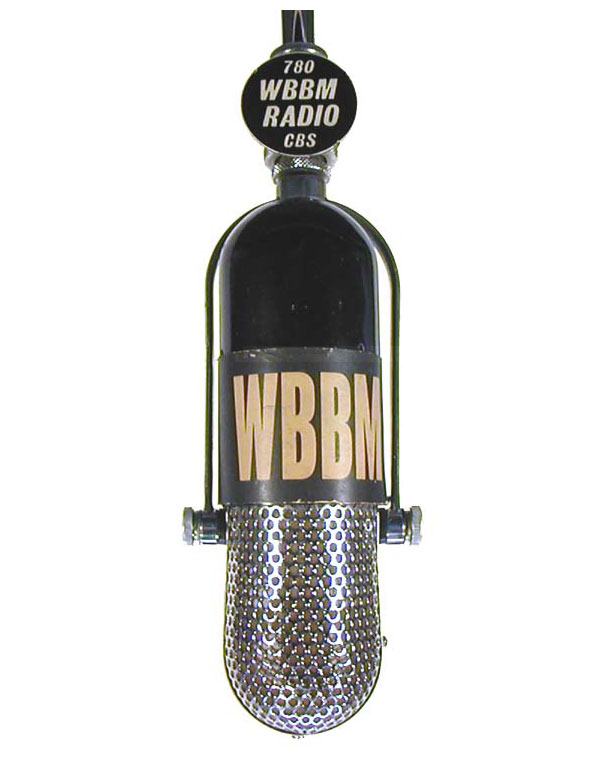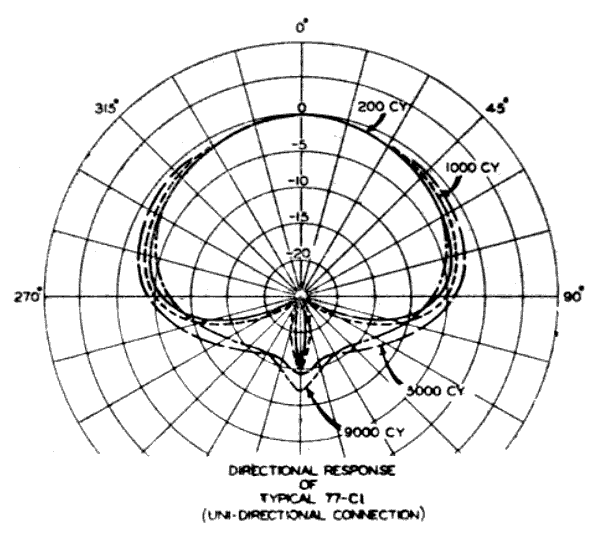
The RCA Type 77-C1
Combination Microphone (1940)
MI-4044B (250/500 ohms)
MI-4044A (30/60 ohms)

The Type 77-C1 microphone, which is slightly more expensive than the Type 77-B1, provides the station owner with the equivalent of three microphones in a single unit. The general construction is similar to that of the 77-B1. It can be used in all applications where a uni-directional microphone is desirable and in addition can be operated at the turn of a switch located in the base of the unit as a bi-directional velocity microphone or as a pressure operated non-directional microphone. Its exceptionally fine frequency characteristics are shown below, together with the directional patterns when used as any one of these three types.


Non-directional polar pattern

Bi-directional polar pattern

Uni-directional polar pattern


Specifications
- Output Impedance (MI-4044B): 250/500 ohms
Output Impedance (MI-4044A): 30/60 ohms
- Output Level Uni-directional: −66 VU
Output Level Bi-directional: −67 VU
Output Level Non-directional: −66 VU
Sound pressure: 10 dynes per centimeter squared
with output terminated into a matched load
- Frequency Response: See curves
- Directional Ratio (Uni-directional): 10 to 1 −20 dB
- Finish: Polished black and chromium
- Mounting: ½-inch pipe thread
- Dimensions: Overall length (including mounting) 8½ inches;
width 33⁄8 inches; depth 2¼ inches
- Weight: 3 pounds

Non-directional frequency response

Bi-directional frequency response

Uni-directional frequency response

The RCA Type 77-C1
RCA introduced the 77 series of all-purpose ribbon microphones in 1932 (designed in 1929) to provide a uni-directional pick-up pattern and wide frequency response. The designer was Harry F. Olson. The early 77 series featured two ribbon microphones in series to create a uni-directional pattern. A switch provided operation of either mic individually or both in series. A labyrinth tube behind the pressure mic’s ribbon directed the air movement into sound absorbing material. When using only the pressure mic, the pattern was non-directional. When using only the velocity mic, the pattern was bi-directional. Later, the 77-D series utilized a single ribbon and inserted a moveable shutter assembly between the ribbon and the labyrinth tube which allowed various directional patterns to be realized. Also in the D series, a reactor could be placed into the signal path to reduce low frequency response and compensate for close talking. Frequency response with the 77-C series depended on the directional pattern selected but 50 Hz to 10 kHz was typical. The 77-C1 was made only in 1940 and was replaced by the 77-D, which evolved into the 77-DX.


All photos above are provided via the courtesy of Dennis Schrank.


Download the data sheet for this mic.